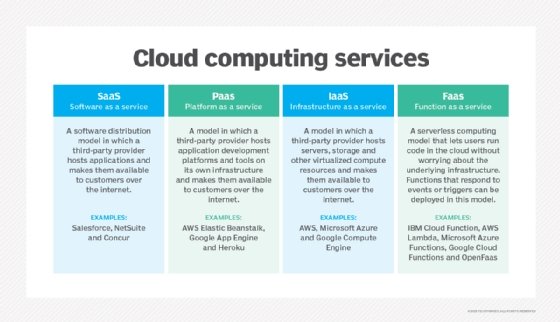Raise Your Company with LinkDaddy Cloud Services: Unleashing Universal Cloud Service Potential
Raise Your Company with LinkDaddy Cloud Services: Unleashing Universal Cloud Service Potential
Blog Article
Simplify Your Infrastructure With Cloud Provider
As organizations browse the ever-evolving landscape of modern technology and information administration, the function of cloud services in streamlining framework has ended up being increasingly prominent. The appeal of structured processes, boosted performance, and improved resource appropriation through cloud remedies is undeniable. The trip in the direction of an extra active and cost-efficient IT infrastructure entails even more than simply migrating to the cloud. It needs a tactical approach and a deep understanding of the subtleties of cloud adoption. Just how can companies successfully navigate this change and absolutely open the possibility of cloud services for simplifying their framework?
Advantages of Cloud Services
Cloud services offer a streamlined approach to handling IT facilities, offering services with flexibility, cost-efficiency, and scalability. One of the vital advantages of cloud solutions is the scalability they offer.
Furthermore, cloud solutions remove the requirement for services to invest in pricey hardware and software program. This cost-efficiency is a substantial advantage, specifically for little to medium-sized enterprises aiming to minimize ahead of time costs. By utilizing cloud services, services can access top notch IT sources without the large price related to standard infrastructure arrangements.
Furthermore, cloud solutions give organizations with the versatility to access their information and applications from anywhere with an internet connection. This level of accessibility improves collaboration among groups, allows remote work, and increases overall productivity. The versatility supplied by cloud solutions empowers services to adapt rapidly to altering market conditions and consumer needs.
Price Savings and Scalability
In addition to the operational benefits highlighted earlier, the assimilation of cloud solutions into a company's facilities comes up with significant expense financial savings and enhanced scalability. Cloud solutions use a pay-as-you-go model, permitting services to scale resources up or down based on current needs, therefore preventing the expenses connected with preserving excess ability. This flexibility allows business to adjust swiftly to varying needs without sustaining unnecessary costs.
Moreover, cloud services eliminate the requirement for in advance financial investments in software and hardware, reducing resources expenditures. Operating expenses are also minimized as business no longer need to manage and maintain physical servers, bring about reduced energy intake and IT staffing prices. In addition, cloud services offer automatic updates and upkeep, making certain that the facilities remains current and safe and secure without requiring hand-operated treatments.
Enhanced Safety Actions
Executing rigid safety and security measures is paramount when integrating cloud services right into a business's infrastructure to make certain and secure sensitive information conformity with sector regulations. Cloud service providers use boosted safety features such as data encryption, firewall program protection, and multi-factor authentication to reduce cybersecurity threats.
Furthermore, normal protection audits and compliance assessments help identify vulnerabilities and make certain adherence to sector criteria. Firms can also benefit from attributes like automatic safety updates and real-time hazard tracking provided by cloud company. By prioritizing safety and security actions and staying aggressive in attending to possible dangers, services can confidently utilize cloud solutions while safeguarding their important data from unauthorized access or breaches.
Transitioning to Cloud Facilities
To effectively integrate cloud solutions right into a company's infrastructure, a structured approach that addresses the change towards cloud-based solutions is critical. Transitioning to cloud framework involves cautious preparation and implementation to make sure a smooth migration procedure. The primary step is to assess the current facilities and figure out which applications and systems appropriate for movement to the cloud. This analysis must consider factors such as data sensitivity, compliance requirements, and efficiency demands.
As soon as the evaluation is full, a movement strategy must be established. This strategy should outline the timeline, sources, and duties for moving each component to the cloud. It is vital to communicate this plan plainly to all stakeholders to make sure placement and lessen disturbances during the change.
During the movement process, monitoring and testing are critical to determine and attend to any problems quickly. Normal checkpoints ought to be established to track development and make required modifications. Furthermore, training for workers on making use of cloud services should be given to ensure a successful change and maximize the benefits of the new framework.
Ideal Practices for Cloud Adoption
Successful adoption of cloud services rests on the critical placement of company purposes with technological capabilities and organizational readiness. To guarantee a smooth transition to the cloud, look what i found companies should begin by conducting a thorough assessment of their current framework and determining which workloads are best suited for cloud movement. It is essential to entail crucial stakeholders from different divisions in the decision-making process to gain buy-in and address any kind of worries beforehand.
Another ideal technique for cloud fostering is to prioritize security and conformity. Organizations has to very carefully examine the protection measures supplied by cloud provider and make sure that their information is protected according to industry requirements and regulatory needs. Executing robust data file encryption, gain access to controls, and normal security audits can aid reduce dangers connected with cloud fostering.

Final Thought

As companies browse the ever-evolving landscape of technology and information management, the role of cloud services in simplifying infrastructure a fantastic read has actually become increasingly famous - universal cloud Service. Exactly how can organizations effectively browse this shift and truly unlock the capacity of cloud services for simplifying their facilities?
Cloud solutions offer a streamlined method to managing IT infrastructure, providing services with flexibility, cost-efficiency, and scalability. By utilizing cloud solutions, services can access top quality IT sources without the substantial cost tag associated with traditional framework configurations.
To guarantee a smooth shift to the cloud, companies must begin by carrying out a thorough evaluation of their existing facilities and identifying which workloads are best matched for cloud movement.
Report this page